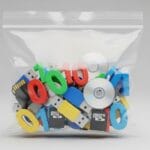Conditional probabilities are bane of many students of Statistics, but statements of conditional probability come up surprisingly often in real life. For example, as Steven Strogatz writes in the New York Times, when doctors are asked to estimate the probability that a woman has breast cancer given a positive mammogram test result, most get the answer wildly wrong despite being given the population frequency of breast cancer and the conditional probability of false positives from a mammogram test. Here’s one doctor’s experience trying to come up with a number:
“[He] was visibly nervous while trying to figure out what he would tell the woman. After mulling the numbers over, he finally estimated the woman’s probability of having breast cancer, given that she has a positive mammogram, to be 90 percent. Nervously, he added, ‘Oh, what nonsense. I can’t do this. You should test my daughter; she is studying medicine.’ He knew that his estimate was wrong, but he did not know how to reason better. Despite the fact that he had spent 10 minutes wringing his mind for an answer, he could not figure out how to draw a sound inference from the probabilities. …
Conditional probabilities are bane of many students of Statistics, but statements of conditional probability come up surprisingly often in real life. For example, as Steven Strogatz writes in the New York Times, when doctors are asked to estimate the probability that a woman has breast cancer given a positive mammogram test result, most get the answer wildly wrong despite being given the population frequency of breast cancer and the conditional probability of false positives from a mammogram test. Here’s one doctor’s experience trying to come up with a number:
“[He] was visibly nervous while trying to figure out what he would tell the woman. After mulling the numbers over, he finally estimated the woman’s probability of having breast cancer, given that she has a positive mammogram, to be 90 percent. Nervously, he added, ‘Oh, what nonsense. I can’t do this. You should test my daughter; she is studying medicine.’ He knew that his estimate was wrong, but he did not know how to reason better. Despite the fact that he had spent 10 minutes wringing his mind for an answer, he could not figure out how to draw a sound inference from the probabilities.” [The correct answer is 9 percent.]
Most students (and doctors!) are taught to use Bayes’ Theorem to calculate marginal probabilities from conditional probabilities, but as Strogatz point out this isn’t exactly an intuitive calculation, with the dividing of probabilities by probabilities and all. He suggests a more intuitive (but slightly less accurate) method is to think instead about frequencies within concrete groups and sub-groups. For the mammogram test, the calculation becomes:
Eight out of every 1,000 women have breast cancer. Of these 8 women with breast cancer, 7 will have a positive mammogram. Of the remaining 992 women who don’t have breast cancer, some 70 will still have a positive mammogram. Imagine a sample of women who have positive mammograms in screening. How many of these women actually have breast cancer?
Since a total of 7 + 70 = 77 women have positive mammograms, and only 7 of them truly have breast cancer, the probability of having breast cancer given a positive mammogram is 7 out of 77, which is 1 in 11, or about 9 percent.
This method is frowned upon by textbooks, because it’s not as accurate (in the example above, rounding to whole numbers of women in the groups), and because it implicitly assumes that the frequency of the event (here, breast cancer) is determined solely by the probability, with no accounting for variation. But it is an intuitive method for understanding conditional probability, that seems more likely (ha!) to come up with an reasonably accurate answer for many people.
Read the rest of Strogatz’s article for other examples of intuitive conditional probability calculations, including a great example from the OJ Simpson trial.
New York Times Opinionator: Chances Are





